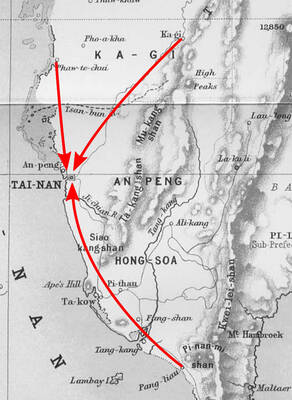Women’s median annual earnings stubbornly remain about 20 percent below men’s. Why is progress stalling?
It may come down to this troubling reality, new research suggests: Work done by women simply isn’t valued as highly.
That sounds like a truism, but the academic work behind it helps explain the pay gap’s persistence even as the factors long thought to cause it have disappeared. Women, for example, are now better educated than men, have nearly as much work experience and are equally likely to pursue many high-paying careers. No longer can the gap be dismissed with pat observations that women outnumber men in lower-paying jobs like teaching and social work.

Photo: AP Photo/Chris O’Meara
SALARY DECLINE
A new study from researchers at Cornell University found that the difference between the occupations and industries in which men and women work has recently become the single largest cause of the gender pay gap, accounting for more than half of it. In fact, another study shows, when women enter fields in greater numbers, pay declines — for the very same jobs that more men were doing before.
Consider the discrepancies in jobs requiring similar education and responsibility, or similar skills, but divided by gender. The median earnings of information technology managers (mostly men) are 27 percent higher than human resources managers (mostly women), according to Bureau of Labor Statistics data. At the other end of the wage spectrum, janitors (usually men) earn 22 percent more than maids and housecleaners (usually women).
Once women start doing a job, “It just doesn’t look like it’s as important to the bottom line or requires as much skill,” said Paula England, a sociology professor at New York University. “Gender bias sneaks into those decisions.”
She is a co-author of one of the most comprehensive studies of the phenomenon, using US census data from 1950 to 2000, when the share of women increased in many jobs. The study, which she conducted with Asaf Levanon, of the University of Haifa in Israel, and Paul Allison of the University of Pennsylvania, found that when women moved into occupations in large numbers, those jobs began paying less even after controlling for education, work experience, skills, race and geography.
And there was substantial evidence that employers placed a lower value on work done by women.
“It’s not that women are always picking lesser things in terms of skill and importance,” England said. “It’s just that the employers are deciding to pay it less.”
A striking example is to be found in the field of recreation — working in parks or leading camps — which went from predominantly male to female from 1950 to 2000. Median hourly wages in this field declined 57 percentage points, accounting for the change in the value of the dollar, according to a complex formula used by Levanon. The job of ticket agent also went from mainly male to female during this period, and wages dropped 43 percentage points.
The same thing happened when women in large numbers became designers (wages fell 34 percentage points), housekeepers (wages fell 21 percentage points) and biologists (wages fell 18 percentage points). The reverse was true when a job attracted more men. Computer programming, for instance, used to be a relatively menial role done by women. But when male programmers began to outnumber female ones, the job began paying more and gained prestige.
WIDE PAY GAP
While the pay gap has been closing, it remains wide. Overall, in fields where men are the majority, the median pay is US$962 a week — 21 percent higher than in occupations with a majority of women, according to another new study, published Friday by Third Way, a research group that aims to advance centrist policy ideas.
Today, differences in the type of work men and women do account for 51 percent of the pay gap, a larger portion than in 1980, according to definitive new research by Francine Blau and Lawrence Kahn, economists at Cornell.
Women have moved into historically male jobs much more in white-collar fields than in blue-collar ones. Yet the gender pay gap is largest in higher-paying white-collar jobs, Blau and Kahn found. One reason for this may be that these jobs demand longer and less flexible hours, and research has shown that workers are disproportionately penalized for wanting flexibility.
Of the 30 highest-paying jobs, including chief executive, architect and computer engineer, 26 are male-dominated, according to Labor Department data analyzed by Emily Liner, the author of the Third Way report. Of the 30 lowest-paying ones, including food server, housekeeper and child-care worker, 23 are female dominated.
Many differences that contributed to the pay gap have diminished or disappeared since the 1980s, of course. Women overall now obtain more education than men and have almost as much work experience. Women moved from clerical to managerial jobs and became slightly more likely than men to be union members. Both of these changes helped improve wage parity, Blau’s and Kahn’s research said.
Yes, women sometimes voluntarily choose lower-paying occupations because they are drawn to work that happens to pay less, like caregiving or nonprofit jobs, or because they want less demanding jobs because they have more family responsibilities outside of work. But many social scientists say there are other factors that are often hard to quantify, like gender bias and social pressure, that bring down wages for women’s work.
After sifting through the data, Blau and Kahn concluded that pure discrimination may account for 9 percent of the gender pay gap. Discrimination could also indirectly cause an even larger portion of the pay gap, they said, for instance, by discouraging women from pursuing high-paying, male-dominated careers in the first place.
“Some of it undoubtedly does represent the preferences of women, either for particular job types or some flexibility, but there could be barriers to entry for women and these could be very subtle,” Blau said. “It could be because the very culture and male dominance of the occupation acts as a deterrent.”

The Taipei Times last week reported that the rising share of seniors in the population is reshaping the nation’s housing markets. According to data from the Ministry of the Interior, about 850,000 residences were occupied by elderly people in the first quarter, including 655,000 that housed only one resident. H&B Realty chief researcher Jessica Hsu (徐佳馨), quoted in the article, said that there is rising demand for elderly-friendly housing, including units with elevators, barrier-free layouts and proximity to healthcare services. Hsu and others cited in the article highlighted the changing family residential dynamics, as children no longer live with parents,

Oct 20 to Oct 26 After a day of fighting, the Japanese Army’s Second Division was resting when a curious delegation of two Scotsmen and 19 Taiwanese approached their camp. It was Oct. 20, 1895, and the troops had reached Taiye Village (太爺庄) in today’s Hunei District (湖內), Kaohsiung, just 10km away from their final target of Tainan. Led by Presbyterian missionaries Thomas Barclay and Duncan Ferguson, the group informed the Japanese that resistance leader Liu Yung-fu (劉永福) had fled to China the previous night, leaving his Black Flag Army fighters behind and the city in chaos. On behalf of the

I was 10 when I read an article in the local paper about the Air Guitar World Championships, which take place every year in my home town of Oulu, Finland. My parents had helped out at the very first contest back in 1996 — my mum gave out fliers, my dad sorted the music. Since then, national championships have been held all across the world, with the winners assembling in Oulu every summer. At the time, I asked my parents if I could compete. At first they were hesitant; the event was in a bar, and there would be a lot

The election of Cheng Li-wun (鄭麗文) as chair of the Chinese Nationalist Party (KMT) marked a triumphant return of pride in the “Chinese” in the party name. Cheng wants Taiwanese to be proud to call themselves Chinese again. The unambiguous winner was a return to the KMT ideology that formed in the early 2000s under then chairman Lien Chan (連戰) and president Ma Ying-jeou (馬英九) put into practice as far as he could, until ultimately thwarted by hundreds of thousands of protestors thronging the streets in what became known as the Sunflower movement in 2014. Cheng is an unambiguous Chinese ethnonationalist,